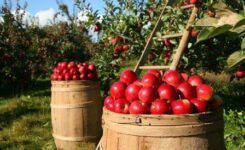What is planting?. Planting is the placement of the planting material in the soil for the purpose of regeneration in order to produce more of the plant species.
Table of Contents
Types of planting materials
Seeds
Seeds are produced by flowering after pollination and fertilization. They contain the part of the plant that germinates and subsequently grows in to new plants.

Advantages of using seeds as planting materials.
- Seeds are easily treated against soil borne pests and diseases.
- They are not bulky therefore storage is easy.
- They are easy to handle during planting making operation easy.
- When planting seeds, it is easy to use machines like seed planters and drillers.
- It is easy to apply manures and fertilizers together with seeds during planting.
- Fertilizers and manures application can be easily mechanized.
- It is possible to develop new crop varieties due to cross pollination.
Disadvantages of using seeds as planting materials.
- Some seeds have long dormancy and they may need special treatment in order to germinate.
- Plants raised from seeds have variations from the mother plant due to cross pollination,
- This may introduce undesirable characteristics.
- Soil borne pests may damage seeds if left for sometime in the soil before rain falls.
- Some seeds may lose viability if stored for a long time. This leads to gaps in the farm.
See also
CLASSIFICATION OF ANIMAL FEEDS